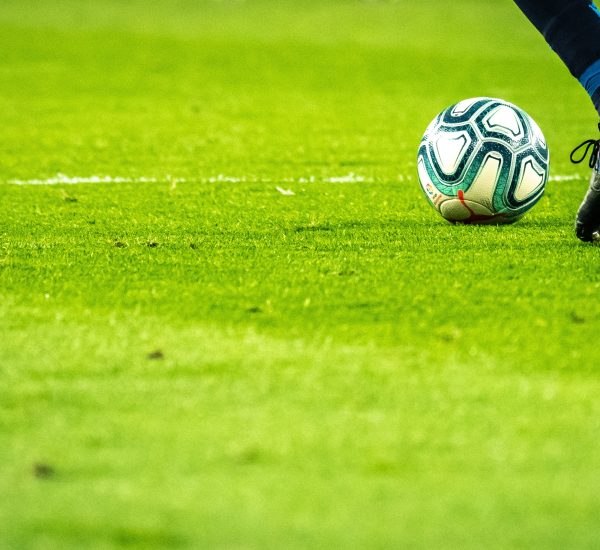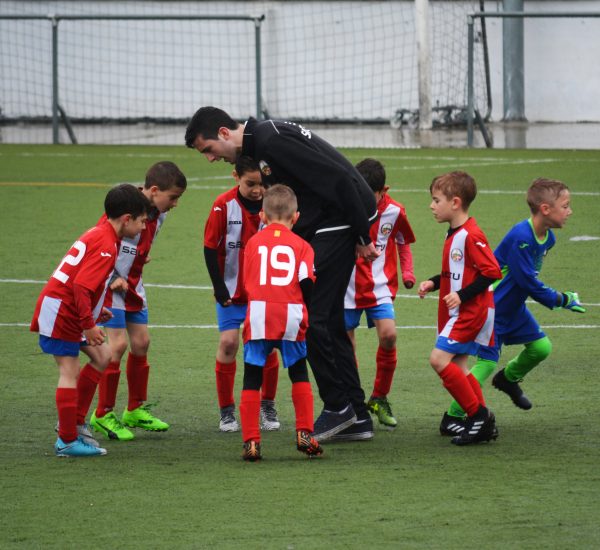Anyone who has ever played soccer knows that it is a sport that requires a great deal of skill. Although strength and speed are certainly important, they are not the only factors that determine success on the soccer field.
To be a good soccer player, one must also have excellent hand-eye coordination, balance, and agility. These skills can be developed through practice and training.
For example, players can improve their hand-eye coordination by working on their passing accuracy. They can work on their balance by practicing dribbling while keeping their center of gravity low. And they can work on their agility by doing drills that involve quick changes of direction.
Ultimately, becoming a skilled soccer player requires a dedication to mastering all the different facets of the game.
Want to step up your soccer game? Check out this blog post for some helpful tips on improving your skills.
Agility
Agility is the ability to change directions quickly while maintaining control of the ball. It is an important soccer skill that can give players an advantage on the field.
Several drills can help players to improve their agility. Players start by dribbling the ball around two cones placed about five yards apart. They then weave in and out of the cones. As they get better at the drill, they can increase their speed.
Another drill that can help improve agility is dribbling between obstacles. This can be done with cones, balls, or any other objects that are safe to dribble around. By weaving in and out of the obstacles, players will develop their ability to change directions quickly while keeping control of the ball.
These drills will help players to become more agile and improve their soccer skills.
Dribbling
Successful soccer dribbling requires a blend of skill, practice, and natural ability. Those who master the art of dribbling can create space on the field, open up passing lanes, and keep possession of the ball.
While there is no one guaranteed method for becoming a skilled dribbler, there are certain techniques that can help.
First and foremost, it is important to keep your head up while dribbling. This allows you to see the field and make split-second decisions about where to go next.
Secondly, it is important to use soft touches to control the ball. This helps you maintain possession while also keeping your opponents guessing.
Finally, it is important to be aware of your surroundings at all times. Anticipating the movements of your teammates and opponents will allow you to make well-timed passes and avoid being tackled.
Passing
Good passers can keep the ball away from the other team and control the game. They know how to make a pass that is hard to intercept and put their teammates in a good position to shoot or make a pass.
The best passers can make all types of passes, whether it is a long pass down the field or a short pass to a teammate who is close by. If you want to become a good passer, there are a few things you need to practice.
First, get used to kicking the ball with different parts of your foot. This will give you more control over the ball and help you make more accurate passes.
Second, try to kick the ball at different speeds. A good passer can make a fast pass when necessary, but they also know how to slow the ball down so that their teammates have time to control it.
Finally, practice passing in different directions. This will help you become more comfortable with making passes to teammates who are not right next to you. With some practice, you will develop the passing skills necessary to control the game and keep the ball away from the other team.
Trapping
Trapping is an essential soccer skill that allows a player to control the ball when it is passed to them. The first step in trapping is to anticipate where the ball will land. Once you have determined the ball’s flight path, you need to position your body so that you can stop the ball with your chest, thighs, or feet.
It is important to make contact with the ball as early as possible, as this will give you more time to control it. After making contact with the ball, you should quickly bring it under your control and into a position where you can pass or shoot. Trapping can be mastered by any soccer player with proper practice.
Juggling
Juggling is a great way to improve your soccer skills. Not only does it help to improve your hand-eye coordination, but it also helps to increase your ball control. In addition, juggling helps to build up strength in your arms and legs. As a result, it can be a great way to improve your overall soccer game.
To juggle, start by kicking the ball up into the air. As it comes back down, strike it with your thigh or chest, and then immediately kick it back up into the air. Continue striking the ball in this way, and try to keep it in the air for as long as possible. Practice will help you juggle better and for longer periods.
Speed
Any soccer player will tell you that speed is a critical skill on the field. Whether you’re trying to outrun an opponent to the ball, or sprinting down the field to take a shot on goal, having speed can give you a significant advantage.
However, speed is not just about being able to run fast. It’s also about being able to change directions quickly, and maintain your balance while doing so.
As any seasoned coach will tell you, developing speed requires a lot of hard work and dedication. You need to be willing to put in the hours of practice, and constantly push yourself to improve. But if you’re willing to put in the effort, you can develop the speed needed to take your game to the next level.
Shooting
Another important soccer skill is shooting. A well-placed shot can easily score a goal, making it a crucial skill for any player to master. Fortunately, there are a few simple steps that can help players improve their shooting accuracy.
First, players should make sure they are properly positioned relative to the goal. They should also take a moment to line up their shot, taking into account factors such as wind speed and direction.
Finally, they should follow through with their kick, ensuring that their foot makes contact with the center of the ball. Players can dramatically improve their shooting accuracy and increase their chances of scoring a goal by following these simple tips.
Bending
Many people think that the key to bending a soccer ball is all in the wrist. While it is true that using your wrist will give the ball some extra spin, the real secret to bending a soccer ball is in the follow-through.
To get the most curl on the ball, you need to make contact with the outside of your foot and then snap your ankle as you follow through. This will put topspin on the ball and make it curl away from the defender. Practice this move in training so that you can put it into action during a game.
Headers
Players often underestimate the importance of headers in soccer. While it may not be the most glamorous part of the game, a well-executed header can be the difference between winning and losing.
To execute a proper header, players must first get into position. This means keeping their eyes on the ball and their body behind it. They should then jump and extend their neck, making contact with the ball at the center of the forehead.
The final step is to follow through with the head, keeping the eyes focused on the ball until it has been struck.
Turning
Turning is a fundamental soccer skill that allows players to change direction quickly and maintain possession of the ball.
To execute a proper turn, players should start by planting their foot on the inside of the ball. The foot should be positioned at a 45-degree angle, with the toe pointing in the direction that the player wants to turn. The player then swings their leg around the ball, using the outside of the foot to make contact with the ball and change its direction.
The final step is to push off from the planted foot and accelerate away in the new direction. Turning can be executed smoothly and quickly, giving players the ability to keep up with the fast pace of the game.
Fake Out
As any soccer player knows, fakes are an important part of the game. A well-executed fake can confuse and distract opponents, opening up space for a shot or pass. There are many different types of fakes, but one of the most effective is the fake out.
To execute a fake out, the player first feints in one direction before quickly changing course and going in the other direction. This can be done with the ball or without the ball, but either way, it takes practice to perfect.
The key is to make your move early enough to catch your opponent off guard, but not so early that they have time to adjust.
One Touch
In soccer, one touch refers to the act of controlling the ball and then immediately passing it to another player, without taking a second touch. One touch can be used to keep possession of the ball, move it out of danger, or set up a scoring chance.
Mastering the one-touch pass is an essential soccer skill, and it takes practice to get it right. The key is to use the inside of the foot to strike the ball, and to direct it towards a teammate who is in a good position to receive it.
Goalkeeping
One of the most important positions on a soccer team is the goalkeeper. The goalkeeper is responsible for protecting the goal and keeping the other team from scoring. While it may seem like a difficult position, there are a few basic skills that all goalkeepers should master.
First, it is important to have the good hand-eye coordination to catch or deflect the ball.
Second, goalkeepers need to be able to move quickly and with agility to get to the ball before the other team.
Third, they must be able to read the game and anticipate where the ball is going to be played.
Finally, goalkeepers must have good communication skills to direct their teammates.
Tackling
A well-executed tackle can not only dispossess an opponent, but it can also create a turnover and lead to a scoring opportunity. There are two main types of tackles: the standing tackle and the sliding tackle.
The standing tackle is used when an opponent has the ball at their feet and is trying to dribble past you. To make a standing tackle, approach your opponent from the side or behind, and extend your leg to trip them up.
The sliding tackle is used when an opponent is running with the ball and you need to take them down quickly. To execute a sliding tackle, extend your leg and slide along the ground, making contact with the ball first.
While both types of tackles have their advantages, it’s important to be able to make both types to be a complete soccer players.
Conclusion
Do you have what it takes to be the next soccer superstar? We hope these tips have helped you understand a little bit more about how to improve your skills and make those jaw-dropping plays.
Soccer is an incredibly physical sport that takes a lot of practice and hard work to perfect, but with dedication and these simple guidelines in mind, you can elevate your game. So get out there on the field and start scoring goals like a pro!



